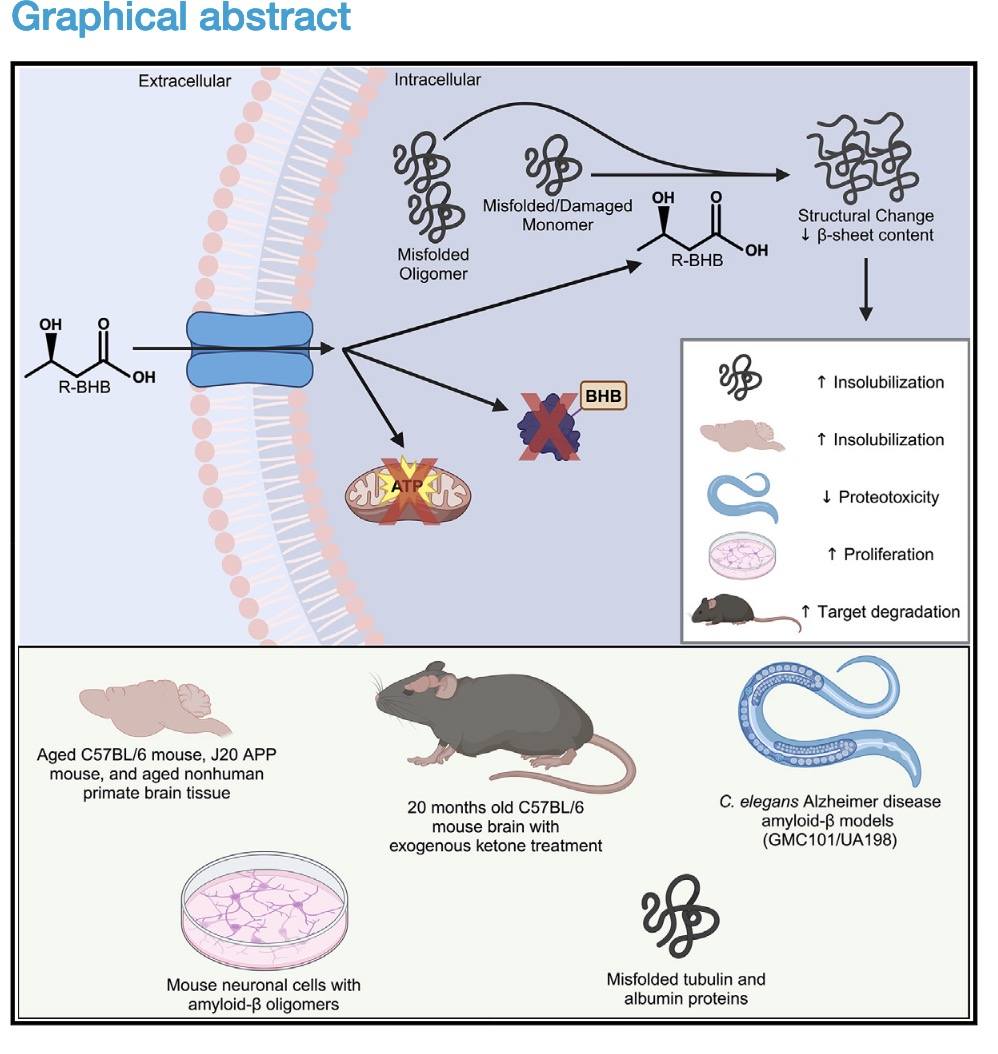The big takeaway of this paper is that in mouse/monkey studies exogenous ketone esters show dramatic improvement for NDDs. Instead of being a inexpensive dietary intervention, it can be administered to patients who cannot sustain/follow a dietary intervention
The paper itself is a easy read, if your interested in this subject I highly recommend the introduction.
The deposition of misfolded proteinaceous aggregates resulting from a loss in proteostasis is a hallmark of aging and neuro- degenerative diseases (NDDs), including AD. 1,3,5,11–13 The relative solubility of these misfolded proteins within the brain, especially in AD, is of clinical importance, as soluble oligomeric proteins exhibit prion-like properties. 1,5 These soluble oligomers seed aggregation and spread from cell-to-cell throughout the brain as a marker of disease progression
Nick Norwitz does a talking head review of the paper - https://youtu.be/oRaNzfHF_do
